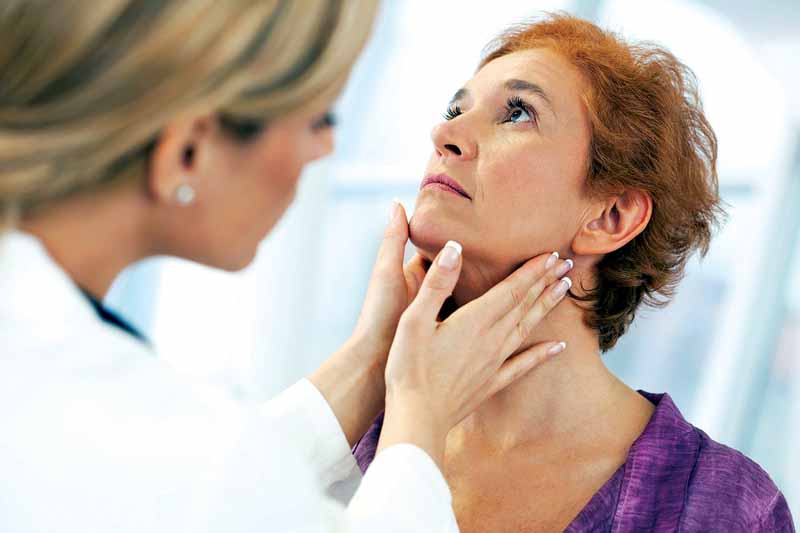 Some conditions have telltale symptoms that are easy to diagnose. Others are more complex with confusing and seemingly unrelated symptoms. This is the case with a common endocrine disorder: abnormal levels of thyroid hormone. Whether the thyroid is producing too much or too little of thyroid hormone, the condition can often be misdiagnosed.
Some conditions have telltale symptoms that are easy to diagnose. Others are more complex with confusing and seemingly unrelated symptoms. This is the case with a common endocrine disorder: abnormal levels of thyroid hormone. Whether the thyroid is producing too much or too little of thyroid hormone, the condition can often be misdiagnosed.
Although thyroid problems are often not visible, they’re very common, especially in women. In fact, one in eight women will be diagnosed with a thyroid disorder in her lifetime. And, women are five to eight times more likely to have a thyroid condition than are men, according to the American Thyroid Association.
Hypothyroidism
The most common cause of hypothyroidism is Hashimoto’s thyroiditis. This condition most often occurs in women over the age of 60. However, it can occur in both men and women of any age. Symptoms of this condition include: loss of hair, severe fatigue, lack of concentration, weight gain, constipation, menstrual irregularity and sensitivity to cold.
Hyperthyroidism
On the other end of the spectrum of thyroid conditions is hyperthyroidism which means the body has too much thyroxine, the hormone produced by the thyroid. This can be the result of an overproduction from the thyroid or by taking too much synthetic thyroid hormone. With too much thyroxine, the body’s metabolism increases significantly, resulting in a variety of symptoms such as: rapid or irregular heartbeat, sweating, nervousness, irritability, changes in menstrual cycle, sensitivity to heat, more frequent bowel movements, fatigue, difficulty sleeping and thinning, brittle hair.
Eye-related Symptoms
In some individuals, hypothyroidism can also affect the eyes, making them protrude beyond their normal orbits, a condition called exophthalmus. Other eye-related symptoms include: red or swollen eyes, excessive tearing and light sensitivity.
For women who are experiencing symptoms of a possible thyroid condition, the first step is to consult with their healthcare provider. Through a physical examination and blood tests, both hypothyroidism and hyperthyroidism can be diagnosed. The good news is that both conditions are highly treatable in most patients with medication.
For more information, call the Katz Institute for Women’s Health Resource Center at 855-850-5494 to speak to a women’s health specialist.
—Submitted by the Katz Institute for Women’s Health


















